How Long Does it Take to Winterize a Boat on Average?
Winterizing a boat involves a series of steps that are designed to protect your boat from the harsh winter weather and prevent damage to its various systems. It should usually be done before the cold weather sets in. So, how long does it take to winterize a boat on average?
On average, a small boat with an outboard motor may take between 1 and 2 hours to winterize. A medium-sized boat with an inboard or outboard motor may take between 4 and 6 hours, while a larger boat with an inboard motor and complex systems needs at least 1–3 days.
However, these depend on several factors, such as the size of your boat, the type of engine it has, and the specific winterization procedures recommended by the manufacturer. Let's see how these factors affect the duration of the boat winterization process.
Summary
- Jet skis have a shorter winterization process, estimated to be 1–2 hours only, because they have a simpler design and more accessible components.
- Yachts need at least 12–24 hours or more to winterize due to their complex systems and designs.
- Sailboats take 4–6 hours to winterize due to the fact that they have rigging, sails, masts, and keels that need careful attention when winterizing.
- Yachts and cabin cruisers require more time for cleaning and inspection, draining and flushing, fuel and engine care, and protecting the boat's exterior.
- Small boats like jet skis require less time for cleaning and inspection than other boats.
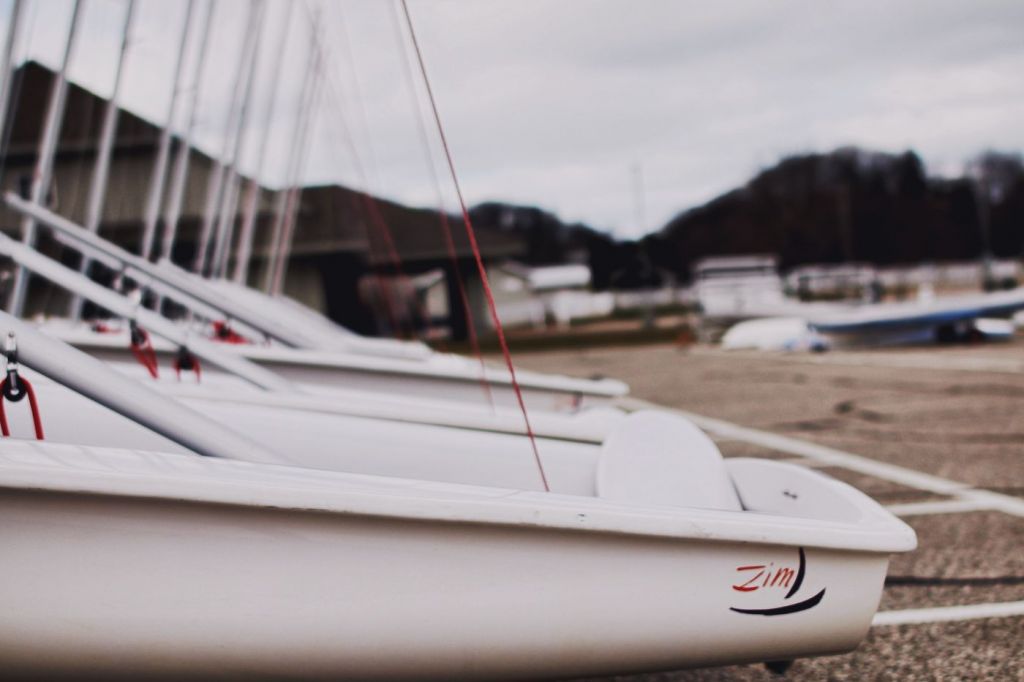
On this page:
Average Time To Winterize A Boat
The table below shows the different types of boat and their motor type, as well as the estimated time it takes to complete their winterization process:
| Boat Type | Boat Size | Motor Type | Estimated Duration |
|---|---|---|---|
| Jet ski | Up to 12 ft. | Jet | 1-2 hours |
| Small fishing boat | Up to 20 ft. | Outboard | 1-2 hours |
| Pontoon boat | 20-30 ft. | Inboard/Outboard | 2-4 hours |
| Center console | 20-40 ft. | Outboard | 2-4 hours |
| Sailboat | Up to 30 ft. | Outboard/Inboard | 4-6 hours |
| Cabin cruiser | 30-40 ft. | Inboard | 6-10 hours |
| Yacht | 40-100 ft. | Inboard | 12-24 hours or more |
Jet skis and small fishing boats take 1-2 hours to winterize
The winterization process helps to protect them from the harsh winter weather conditions, which can cause damage to the boat's engine and other components. The process involves draining all water from the boat's engine and systems and adding antifreeze to prevent any remaining water from freezing and causing damage.
Wondering if it's time to winterize your boat? Get the right timing to winterize your boat by reading this article.
Here are some reasons why the winterization process for these types and sizes of boats only takes at least 1-2 hours:
Jet skis and small fishing boats are smaller in size
Jet skis and small fishing boats are smaller in size compared to larger boats, which means they have fewer components that need to be winterized. This makes the process quicker and easier to complete.
They have outboard motors which are easier to winterize
Small fishing boats typically have outboard motors, which are easier to winterize compared to inboard motors found in larger boats. Outboard motors also have a simpler design.
See also article on "Do You Have To Winterize An Outboard Motor?" for more information.

They have simpler systems
Jet skis and small fishing boats have simpler systems compared to larger boats. For example, they may not have a freshwater system or a toilet system, which makes winterizing them quicker and easier.
Their components are more accessible
The components of jet skis and small fishing boats are more accessible compared to larger boats. This makes it faster to drain the water and add antifreeze to the systems.
Pontoon boats and center consoles need 2-4 hours to winterize
The winterization process for larger boats such as pontoon boats and center console boats takes longer compared to smaller boats like jet skis and small fishing boats, and here are some reasons why:
These boats are larger in size
Pontoon boats and center console boats are larger in size compared to jet skis and small fishing boats. They have more components that need to be winterized, which takes more time.
They have more complex systems
These boats have more complex systems compared to smaller boats, as they may have freshwater systems, toilets, and other amenities that need to be winterized. These systems take more time to drain and add antifreeze to.
They may have a different motor type
Pontoon boats may have inboard motors, which are more complex and take more time to winterize compared to outboard motors found in smaller boats.
Their components are less accessible
The components of larger boats are less accessible compared to smaller boats. This makes it harder to drain the water and add antifreeze to the systems, which takes more time.
Sailboats take at least 4-6 hours to winterize
Below are some reasons why the winterization process for sailboats takes 4-6 hours:
They are larger in size
Sailboats are larger in size compared to jet skis and small fishing boats. They have more components that need to be winterized, which takes more time.
They also have a more complex system
Sailboats may have freshwater systems for drinking, cooking, and cleaning, as well as toilets and other plumbing fixtures that need to be winterized to prevent damage from freezing temperatures. This process can take more time and effort than simply draining and adding antifreeze to smaller boats, which may not have these types of systems in place.
They have rigging and sails
Before winter, the rigging should be inspected for any signs of wear or damage, and any worn or damaged components should be replaced. The rigging should also be lubricated to prevent rust and corrosion during the off-season.
The sails themselves also require special care. They should be removed from the boat, cleaned, and inspected for any damage.
Any repairs or replacements should be made before the sails are stored for the winter. The sails should be stored in a dry, cool place, away from sunlight and moisture. This will help prevent mold and mildew from forming on the sails, which can cause damage over time.
They have a mast and keel
During the winterization process, both the mast and keel need to be inspected and maintained to ensure that they are in good condition for the next sailing season. This can take more time compared to smaller boats, as the mast and keel on sailboats tend to be larger and more complex.
The mast should be inspected for any signs of damage or wear, such as cracks or corrosion. Any damaged components should be repaired or replaced as needed. The mast should also be cleaned and lubricated to prevent rust and corrosion during the off-season.
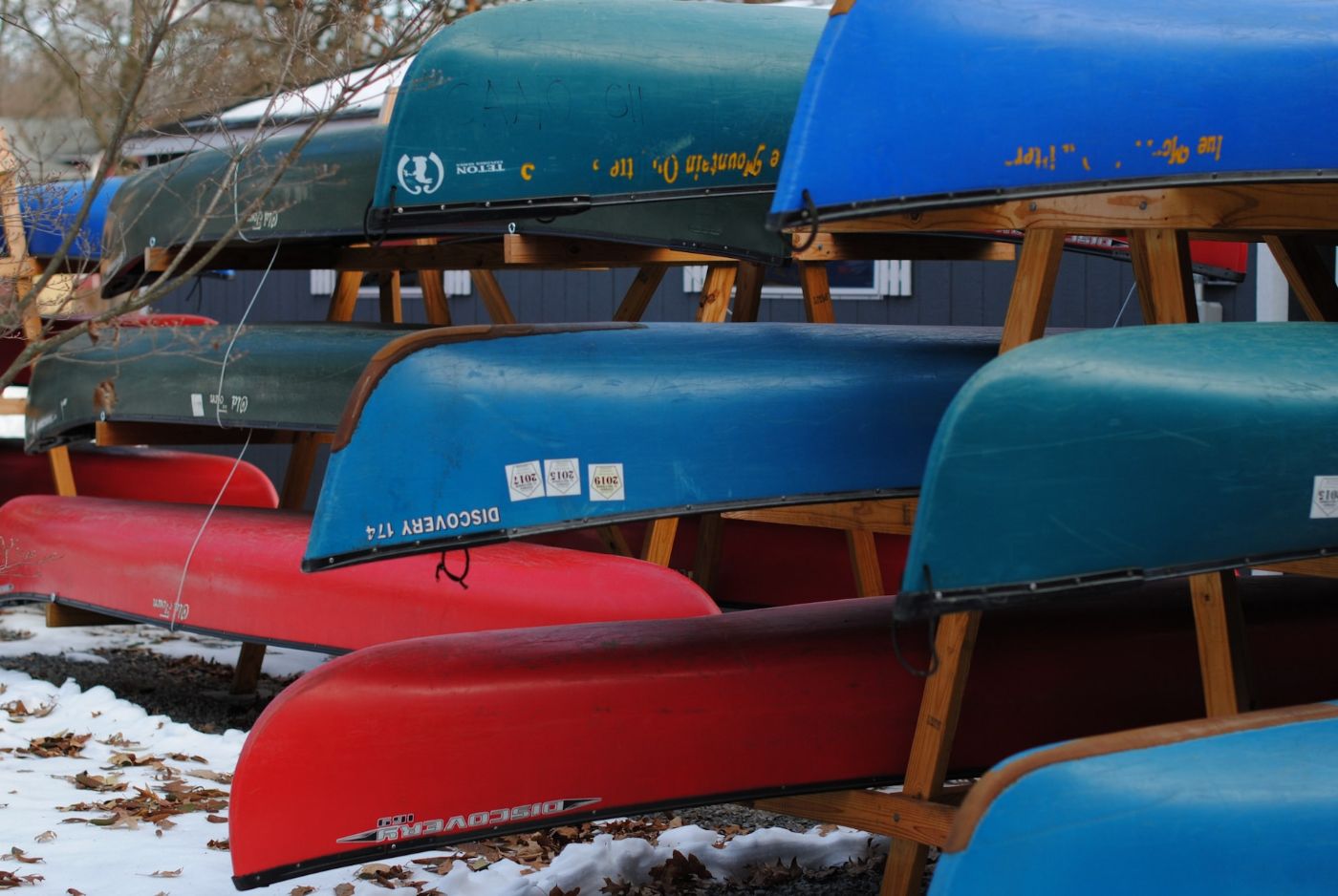
The keel should also be inspected for any damage or wear, such as cracks or chips. Any damage should be repaired before the boat is stored for the winter. The keel should also be cleaned and lubricated to prevent rust and corrosion.
The winterization process for cabin cruisers takes longer
The winterization process for cabin cruisers takes longer compared to smaller boats, because of their size, more complex systems, and less accessible components. Here are other reasons why they take at least 6-10 hours to complete the winterization process:
They have inboard motors
Cabin cruisers typically have inboard motors, which are more complex and take more time to winterize compared to outboard motors found in smaller boats.
Inboard motors require more steps to winterize, including draining the cooling system, changing the oil, and adding antifreeze to the engine block.
They have heating and air conditioning systems
Having heating and air conditioning systems in cabin cruisers is a great convenience for boaters who want to enjoy their time on the water in comfort. However, these systems need to be properly maintained and winterized to prevent damage and ensure they continue to function properly.
During the winter months, when cabin cruisers are not in use, you need to properly winterize the heating and air conditioning systems to prevent any damage from freezing temperatures. This involves draining any water from the system and adding antifreeze to prevent any remaining water from freezing and causing damage.
They have more complex electrical systems
The electrical systems of cabin cruisers are more complex due to the larger size of the boat and the various amenities that are typically included in the cabin. These amenities can include lighting, heating and cooling systems, refrigeration, entertainment systems, and more.
In addition to these amenities, cabin cruisers often have multiple batteries, generators, and electrical panels to manage the various systems onboard.
Proper winterization of the electrical systems prevents damage from the cold weather. This involves draining all water from the systems and adding antifreeze to prevent any remaining water from freezing and causing damage.
It also involves disconnecting the batteries and storing them in a warm, dry place to prevent them from freezing and losing their charge.
They have a generator
The generator itself needs to be properly winterized to prevent damage from the cold weather. This involves draining all fuel from the system and adding antifreeze to prevent any remaining water from freezing and causing damage.
Additionally, the generator may need to be covered or stored in a protected area to prevent exposure to the elements.
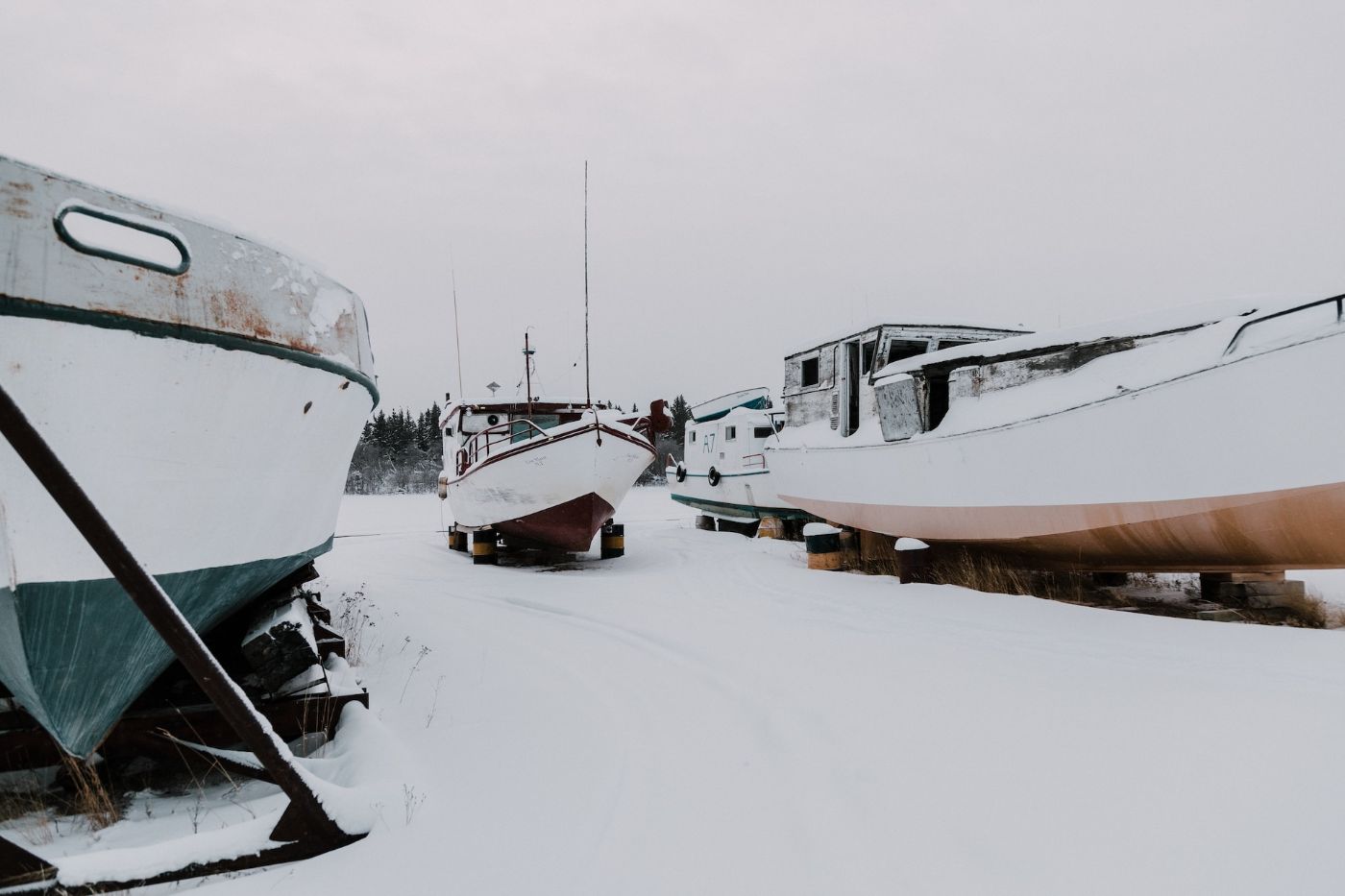
The winterization process for yachts takes more than 12-24 hours
Here are some reasons why the winterization process for yachts takes the longest:
They can be enormous in size
Yachts are typically larger than other boats, which means there is more surface area that needs to be protected from the elements during the winter months. This includes the hull, deck, and any exposed machinery.
Theya re highly-complex
Yachts are often equipped with more advanced systems and equipment than other boats, such as air conditioning, generators, and electronics. Each of these systems requires special attention and preparation to ensure they are protected during the winter.
They are made of materials which require special care
Many yachts are made from materials that require special care during the winter months, such as teak wood and leather. These materials can be damaged by exposure to cold temperatures and moisture, so they need to be properly protected.
They have a more complex HVAC Systems
The HVAC systems on yachts are typically more complex than those found on smaller boats due to the larger size and luxury amenities of yachts. These systems are designed to provide a comfortable living environment for the crew and passengers, regardless of the outside temperature or weather conditions.
However, because of the complexity of these systems, they require special attention to ensure that they are properly winterized and protected from damage. This is particularly important for yachts that are used in colder climates, where the risk of freezing pipes and other components is high.
Proper maintenance and winterization of yacht HVAC systems can help prevent costly repairs and downtime and ensure that the yacht is ready to use when the weather warms up again. This may involve draining and flushing the system, adding antifreeze, and covering or insulating exposed components.
Yachts have more complex electrical systems
One of the main challenges with yacht electrical systems is the risk of corrosion and water damage, which can cause electrical components to fail or malfunction. This is particularly true in colder climates, where the risk of freezing and thawing can cause water to seep into electrical connections and cause damage.
To prevent these issues, yacht owners and operators must take special care to winterize their electrical systems before the cold weather sets in. This may involve draining and flushing the systems, disconnecting batteries, and covering or insulating exposed components.
Regularly inspecting and maintaining the electrical systems throughout the year also ensures that they are functioning properly and allows you to catch any potential issues before they become serious problems.
Step-By-Step Guide To Winterize Your Boat
Now that you know how long it takes to winterize your boat, let's get to know the actual steps of winterization:
| Boat Type | Cleaning and Inspection | Draining and Flushing Systems | Fuel and Engine Care | Protecting the Boat's Exterior | Securing the Boat for Winter | Post-Winterization Care |
|---|---|---|---|---|---|---|
| Jet ski | 1-2 hours | 30 minutes - 1 hour | 1-2 hours | 1-2 hours | 30 minutes - 1 hour | 30 minutes - 1 hour |
| Small fishing boat | 2-3 hours | 1-2 hours | 2-3 hours | 2-3 hours | 1-2 hours | 1-2 hours |
| Pontoon boat | 3-4 hours | 1-2 hours | 2-3 hours | 2-3 hours | 1-2 hours | 1-2 hours |
| Center console | 2-3 hours | 1-2 hours | 2-3 hours | 2-3 hours | 1-2 hours | 1-2 hours |
| Sailboat | 3-4 hours | 1-2 hours | 2-3 hours | 2-3 hours | 1-2 hours | 1-2 hours |
| Cabin cruiser | 4-5 hours | 2-3 hours | 3-4 hours | 3-4 hours | 2-3 hours | 2-3 hours |
| Yacht | 5-6 hours | 3-4 hours | 4-5 hours | 4-5 hours | 3-4 hours | 3-4 hours |
Before winterizing your boat, here is an ultimate checklist of supplies you may need, so you don't miss anything.
Cleaning and inspection
- Clean the boat's bottom to remove dirt and barnacles.
- Check the hull and fiberglass for any damage.
- Inspect the deck and freshwater systems for leaks and damage.
- Drain the freshwater system and holding tanks.
- Use a garden hose to flush the drains and water systems.
Draining and flushing systems
- Drain and flush the engine, freshwater system, and holding tanks.
- Add antifreeze to the freshwater system and holding tanks.
- Make sure the antifreeze reaches the water intake and thermostat.
- Close the seacocks and petcocks. Remove the prop and grease fittings.
All about fuel and engine care
- Add a fuel stabilizer to the gas tank and run the engine for 10 minutes.
- Change the engine oil and replace the fuel filter.
- Fog the engine with fogging oil. Lubricate the air intake and petcocks.
- Check the battery and remove it for winter storage.
Protecting the boat's exterior
- Cover your boat with a tarp or shrink wrap.
- Make sure to cover the boat's vents to prevent moisture buildup.
- Use a marine lubricant to protect metal parts from rust.
- Use mildew and mold protection on the boat's interior.
Securing the boat for winter
- Use jack stands to support the boat's weight.
- Place the boat on a trailer or blocks for added support.
- Make sure to remove all valuables from the boat.
- Close the hatches and windows.
Post-winterization care
After winterizing your boat, you should properly de-winterize it in the spring by reconnecting hoses, replacing drained fluids, and checking all systems.
Proper ventilation is important to prevent mold and mildew, and you should also take care of the engine by changing the oil and oil filter, replacing the fuel filter, and checking the spark plugs.
Keep your boat's battery charged and check all other systems for maintenance needs. Finally, perform a final check of all systems before taking your boat out on the water in the spring.
See also the article on How to De-Winterize a Boat in 15 Easy Steps.
Common Mistakes In Boat Winterization
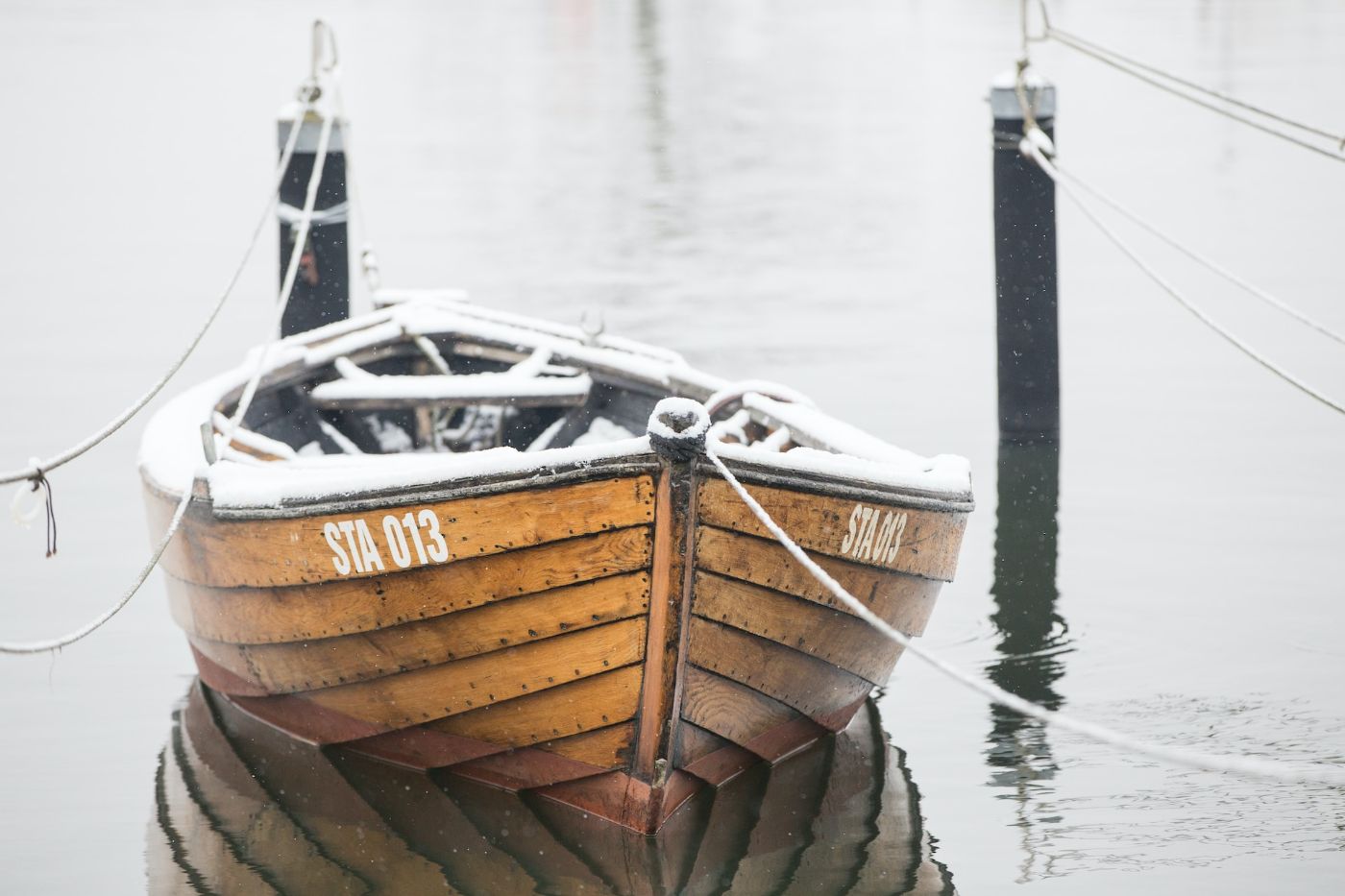
There are some common mistakes that boat owners make during the winterizing process that can lead to costly repairs and damage, and some of these include the following:
Mistake 1: Not covering your boat properly
A good boat cover will protect your boat from snow, ice, and other winter elements that can cause damage. However, many boat owners make the mistake of using an old or ill-fitting cover that does not provide adequate protection.
You might need to make sure that your boat cover fits snugly and covers the entire boat, including the hull, deck, and any exposed equipment.
Mistake 2: Not using antifreeze properly
Antifreeze helps protect your boat's engine and water systems from freezing temperatures. However, many boat owners make the mistake of not using antifreeze properly. You can skip it if you have a simpler system or boat design.
You need to use the right type of antifreeze for your boat's specific engine and water systems and follow the manufacturer's instructions carefully. Additionally, you need to make sure to properly dispose of any excess antifreeze to avoid contamination of the environment.
Mistake 3: Neglecting to check for leaks
You will need to carefully inspect your boat's hull, deck, and bottom for any cracks, holes, or other damage that could allow moisture to seep in. Additionally, try checking all hoses, clamps, and fittings for signs of wear or damage, and replace any that are worn or damaged.
Mistake 4: Not changing the oil
Changing the oil in your boat's engine helps remove any contaminants that could cause damage during the winter months. However, many boat owners make the mistake of neglecting to change the oil before winter storage. Always change the oil and oil filter according to the manufacturer's instructions, and use the right type of oil for your boat's engine.
Mistake 5: Neglecting to protect valuables
During the winterization process, always remove any valuables, electronics, or other sensitive equipment from your boat before storing it for the winter. Additionally, make sure to properly secure your boat and use locks and other security measures to deter theft and vandalism.
Out of all the possible mistakes, one big mistake is to totally not take time to winterize your boat. If you want to know what happens if you don't do this important maintenance task, you should read this article.
Did you find the answer to your specific question?
👍 0 👎 0

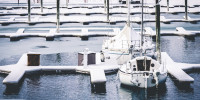
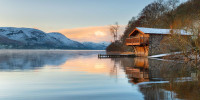

Leave a comment